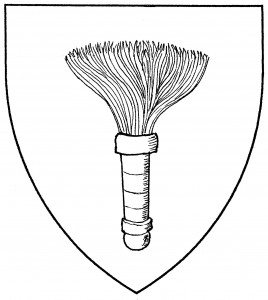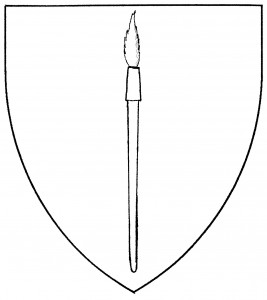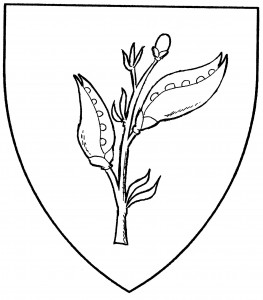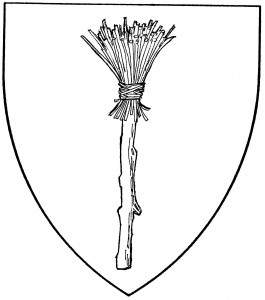A brush is a bundle of hair or straws, bound and mounted on a handle, and used as a tool for painting, cleaning, or applying liquid. The unmodified term “brush” refers to a hand-brush. It was used in the original arms of the Worshipful Company of Haberdashers, 1446 [Bromley & Child 138], and in the canting arms (German Bürste) of von Börstel, 1605 [Siebmacher 174].
In Society heraldry, the most common form of brush is termed the “artist’s brush” or “artist’s paintbrush”: a tuft of hair mounted by a ferrule on a long slender handle. Its construction and form have changed little since it was described in Cennini’s Libro dell’Arte, 1437. If this type of brush is intended, it must be specified in the blazon. When blazoned “proper”, the artist’s paintbrush has a brown wooden handle and black bristles.
Both forms of brush have the bristles to chief by default. For related charges, see besom.
Thomas for the Interim bears: Vert, a gauntlet aversant sable sustaining a rose slipped proper and an artist’s brush sable crossed in saltire all fimbriated Or.
Laura MacConoch bears: Or, a sheaf of artist’s brushes sable.
Sine nic Dhonnchaidh bears: Ermine, two artist’s brushes in saltire surmounted by another palewise azure.



